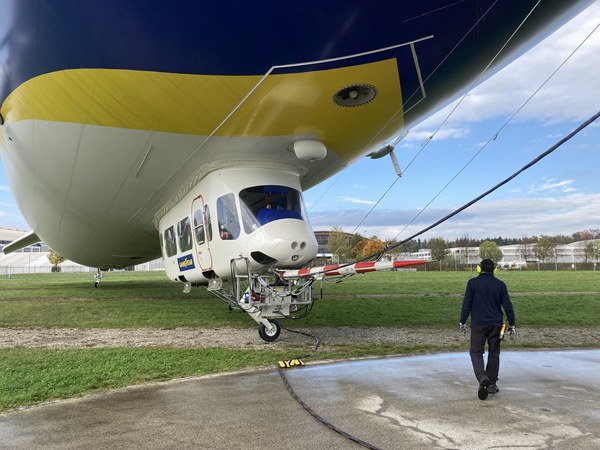19. November 2024
If you spotted a zeppelin flying around Friedrichshafen and Lake Constance in Germany recently, you may have seen one of the first test flights to trial an anemometer system that is to be used in Jülich research projects next year. The zeppelin is ideally suited for this type of research due to its stable and smooth flight characteristics.
During the test flight, the two Jülich researchers, Dr. Eva Pfannerstill and Dr. Georgios Gkatzelis from the Institute of Tropospheric Research, were on board. Among other things, they aim to investigate how household chemicals contribute to air pollution in the cities of the Rhine-Ruhr metropolitan region. They also plan to compare the emission flux measurements from the zeppelin with long-term measurements from weather towers.
The pilots performed various maneuvers, including rapid ascents and descents, adjustments to the Zeppelin's pitch and circling - all to check whether the zeppelin's movements affect the measurements. The first emission flux measurements, for which highly accurate wind measurements and precise wind data are required, are expected to be carried out from late summer next year. The zeppelin will then fly over North Rhine-Westphalia and the surrounding area, possibly also over Belgium and the Netherlands.
Dr. Rouven Mayer from Zeppelin NT developed the wind measurement system for the Jülich researchers and is currently evaluating the data after the test flight.
Impressions from the research zeppelin
Contact Persons
Dr. Eva Pfannerstill
Young Investigator Group Leader
- Institute of Climate and Energy Systems (ICE)
- Troposphere (ICE-3)
Dr. Georgios Gkatzelis
Senior Scientist Head of group "Organic Trace Gases"
- Institute of Climate and Energy Systems (ICE)
- Troposphere (ICE-3)














